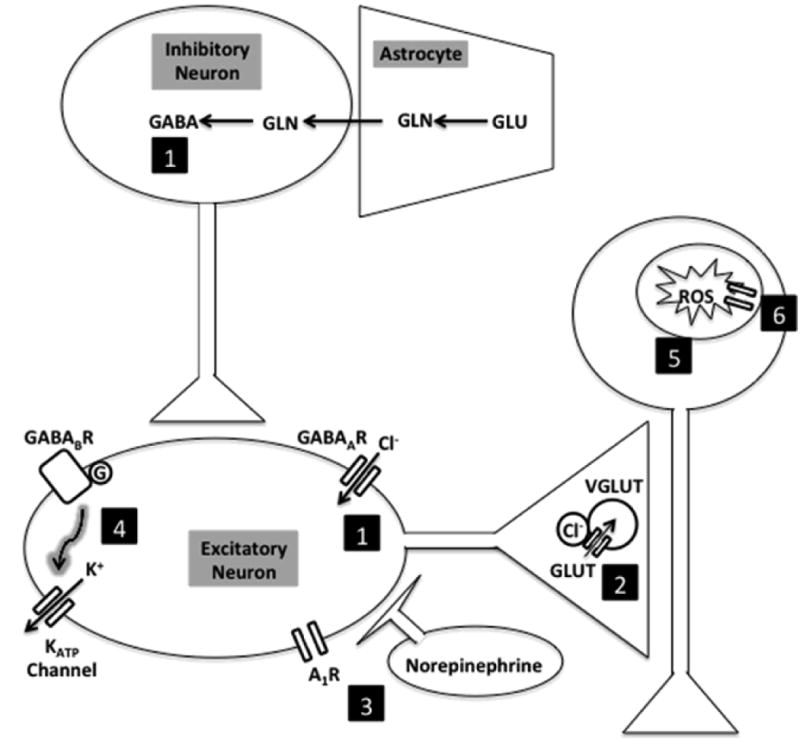Figure 2.

Possible anticonvulsant effects of ketone bodies on the brain. (1) Increased GABA synthesis through alteration of glutamate cycling in glutamate-glutamine cycle or altered neuronal responsiveness to GABA at GABAA receptors. (2) Decreased glutamate release by competitive inhibition of vesicular glutamate transporters. (3) Other neurotransmitters, including norepinephrine and adenosine. (4) Increased membrane potential hyperpolarization via KATP channels possibly mediated by GABAB receptor signaling. (5) Decreased reactive oxygen species production from glutamate exposure. (6) Electron transport chain subunit transcription. Abbreviations: A1R, adenosine receptor; Cl, chloride; GLN, glutamine; GLU, glutamate; GABA, γ-aminobutyric acid ; GABABR, γ-aminobutyric acid beta receptor; GABAAR, γ-aminobutyric acid alpha receptor; VGLUT, vesicular glutamate transporter; ROS, reactive oxygen species.
